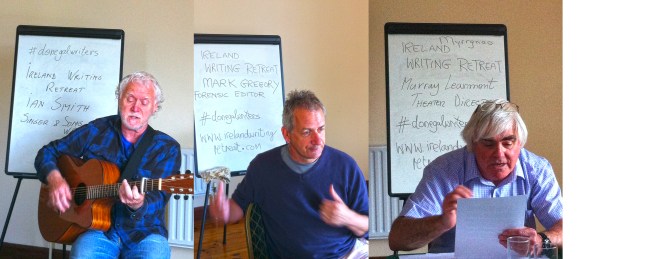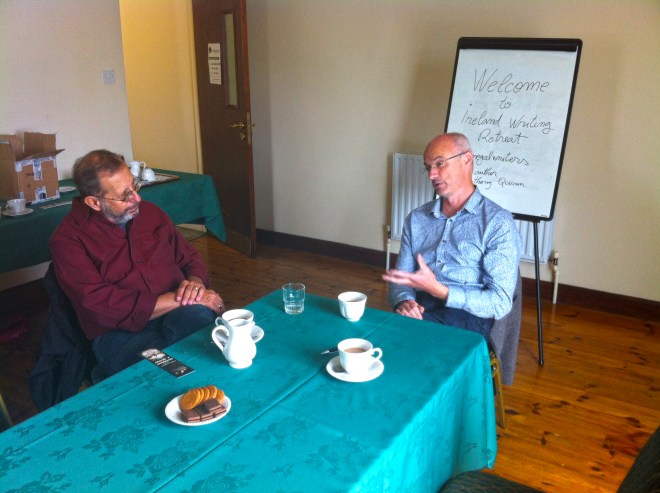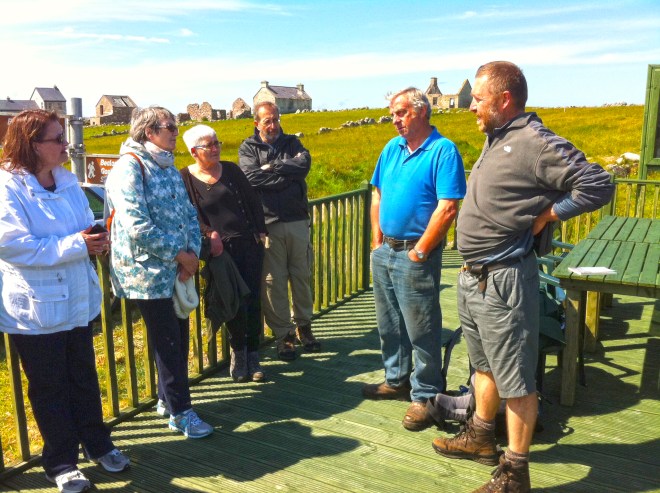Seems as if Donegal’s leading newspaper and Údarás na Gaeltachta are on a head-on collision over truth following publication by the ‘Donegal News’ recently of sensitive, confidential correspondence indicating the Irish language group has been planning wind-farms on many sites throughout the county and an immediate rebuttal of the article in a press release issued by the Irish language group.
Údarás na Gaeltachta has wind turbine plans for six sites
An tÚdarás dismisses wind turbine talks
If not for strong protest meetings by Stad An Tuirbín Gaoithe, a community-based Donegal group opposing Galway company, Lir Energy Ltd’s plans to construct 123- meter turbines on publicly-owned land in Gweedore and a flood of more than 100 objection letters to the county council, a forest of turbines could have gone up ‘under the radar’ – some in scenic sites and some close to homes.
According to the confidential correspondence obtained by the newspaper, these could include Ardara, Kilcar, Fintown, Cloghan, Termon and Glencolmcille.

A string of shady dealings have left many people disturbed by the clandestine way in which Údarás now seems to operate, both locally in Donegal and out of its Galway headquarters.
Following the secrecy of the sale by Údarás of Irish seaweed rights to Canadian multinational Acadian Seaplants, with an unprecedented ten-year confidentiality clause attached to the contract, by which no documents can be accessed, some observers say the Irish language economic group has lost public confidence.
An Oireachtas Public Accounts Committee (PAC) investigation queried why 30,000 euro was spent by Údarás on seven different trips by senior officials to look at “seaweed projects” in Halifax, Canada, according to a report in The Irish Times.
These suspicious situations plus behind-the-scenes talks with a Catholic Church group to construct what some say was to be an alcohol, sex-addiction and drugs rehabilitation clinic in Falcarragh in a landscaped green area now used for community walks and jogging, has left some wondering if the publicly-funded group has reneged on its responsibilities in terms of transparency and fairness.

Landscaped area in Falcarragh that was being earmarked for an addiction center to be funded by Udaras.
“This organization is funded out of the public pocket so at the very least it should be open about how exactly it’s spending that money,” said one irate Gaoth Dobhair resident at the recent ‘Scoil Gheimridh’ (Winter School) music festival. “People are also questioning the ownership of this Galway company, Lir, and what its connections might be to top executives of Údarás. It could be a re-run of the seaweed scandal.”
It has also become known that the Údarás office in Donegal is to be paid a whopping 600,000 euro for managing a 2.3 million euro EU LEADER scheme in the county, almost a quarter of the total funding, aside from several million euro it receives annually out of the national public coffers.
“Is the wind-farms’ project simply another way for Údarás executives to make money?” said a resident of Bunbeg earlier this week. “There’s no proof at all they’ll help reduce energy costs as we’ve had wide turbines for years in the area and there’s been no obvious public benefit at all. It’s long past time people were told just how much money is being used by Údarás for projects that create jobs and how much is simply being used to top up executive salaries and expenses. For God’s sake, Údarás staff have the highest salaries of any group under the Department of Arts, Heritage, Regional, Rural and Gaeltacht Affairs.”
While many criticize Údarás for its poor record in job creation in Donegal, it must be acknowledged that it is not easy to attract companies to Ireland’s most northwesterly region, but few would disagree that greater transparency is necessary to calm rising fears that scarce public money is being misspent.
If you’re interested in political and corporate corruption in a suspense novel linking Donegal to the US, read newly-published ‘Pretty Ugly,’ to be launched also in Dublin this month. Can be purchased direct from Amazon, in eBook or print form and locally, in Donegal from Gallaghers or Matt Bonners Bunbeg, or Easons Letterkenny.






















